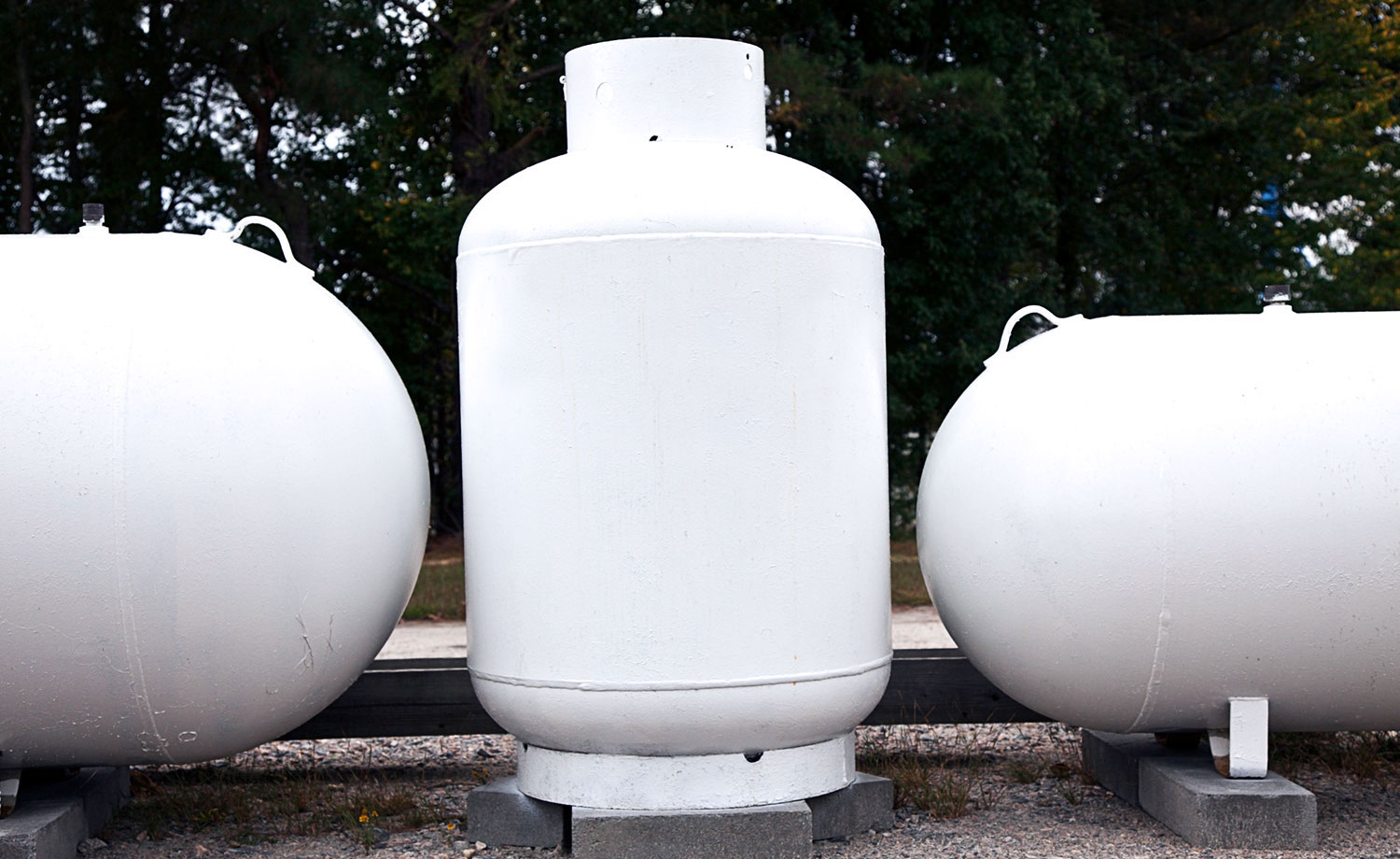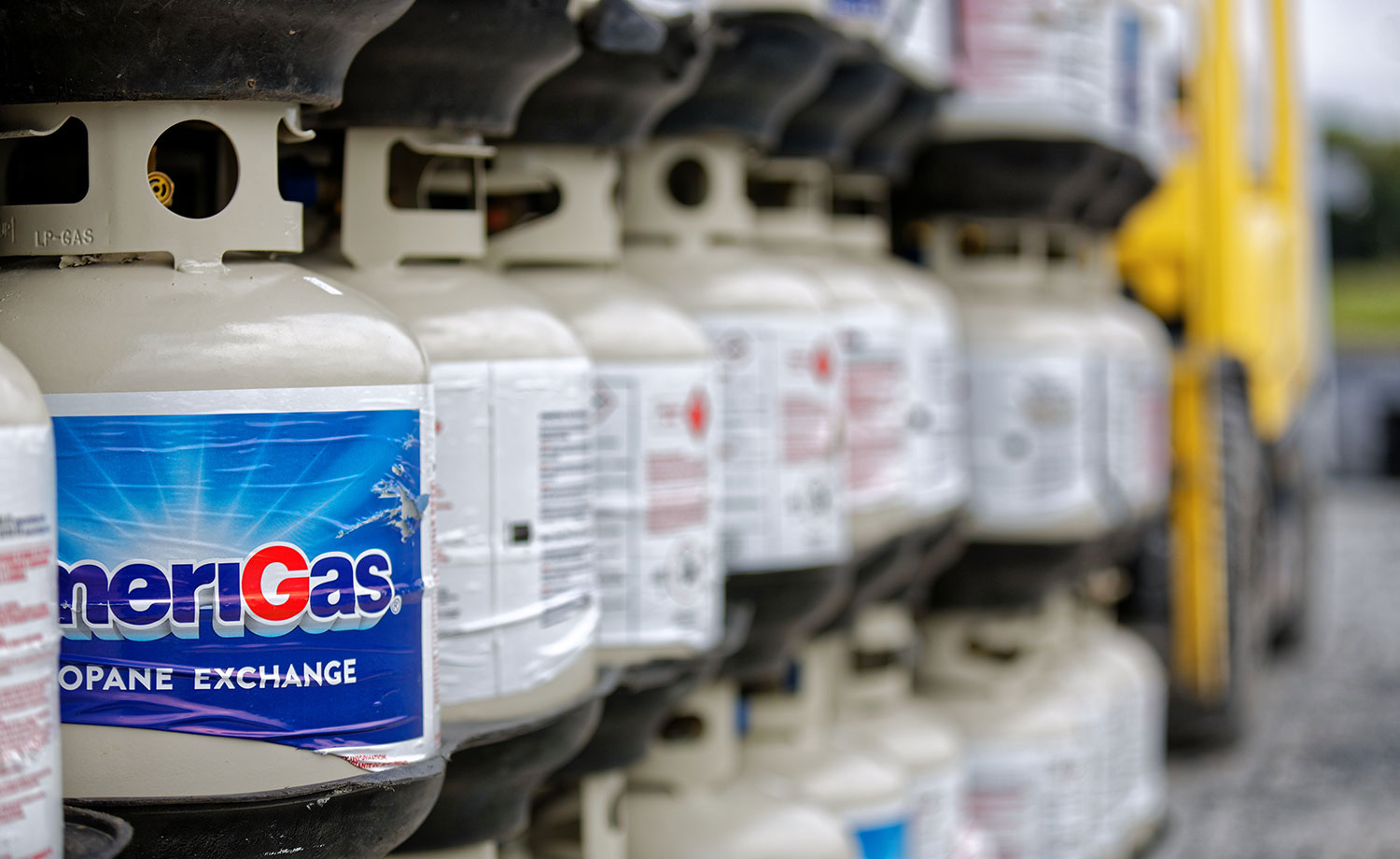
Storing Propane Outdoors
Storing propane tanks outdoors is perfectly safe, but it's best to choose a spot that's away from your home. When storing your propane tanks in the winter, it's important to know that freezing temperatures aren't a problem for propane—in fact, you don’t even need to cover your tank when storing it outdoors in the winter.
Place the tank on a sturdy surface, like a piece of wood or slab of concrete, and store it uncovered or covered.
Storing propane tanks in the summer is easy, too. In warm weather your propane tank can still be stored outdoors on a flat, solid surface. You'll want to keep the tank in a shaded area so that it's not in direct sunlight for long periods of time—this will keep the tank at a safe temperature, note exceeding 120 °F (49 °C).

Indoor Propane Storage
Indoor propane storage is convenient and safe, but only if you have the right setup. You should never store your propane tank in your living area or in any spot that's attached to your home.
Storing propane tanks in a garage or detached shed is the best choice for indoor storage. These structures provide coverage from direct sunlight, while also providing a well-ventilated area for the tank in warm and cold weather.
Keep your tank on the ground, in an area that's clear of electrical tools and flammable or combustible materials.

Propane Storage Tips
It's important to follow these precautions—even if your propane tank isn't full—to ensure safe and proper use of your cylinder.
- Your propane tank should never be stored in, or subject to, temperatures above 120 °F (49 °C)
- Keep your tank above −40 °F (−40 °C) in the colder months
- Avoid storing your tank in direct sunlight
- Never store your tank on its side or upside down
- Always ensure that the gas valve is in the OFF position when storing your tank
- Never store your propane tank inside your home or vehicle
